Kingsgrove Branch:
Schnap Electric Products Blog
Schnap Electric Products Blog Posts
Outdoor Garden Lights
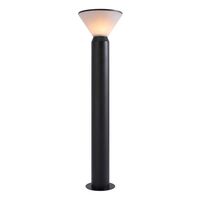
G'day! For us Aussies, the backyard isn't just a patch of grass – it's where we live. It's the scene of countless barbies, games of backyard cricket, and long, lazy evenings enjoying the cool change. To make the most of this precious space after the sun goes down, you need more than just the back porch light on. You need proper outdoor garden lights.
A well-planned garden lighting setup can completely transform your yard, turning it from a dark, unusable space into a magical, inviting oasis. It's not just about looks either; it's about safety and security too.
Why Bother with Outdoor Garden Lights?
Investing a bit of time and effort into your garden lighting offers some fair dinkum brilliant benefits:
- Boosts Kerb Appeal & Wow Factor: First impressions count! Highlighting feature trees, pathways, and architectural elements makes your whole property look schmick and way more inviting.
- Improves Safety: Illuminating pathways, steps, deck edges, and potential trip hazards is crucial for preventing nasty falls, especially when you've got guests over or the kids are running around.
- Enhances Security: A well-lit yard is a massive deterrent to anyone thinking about sneaking around where they shouldn't be. Dark shadows are a burglar's best friend.
- Creates the Perfect Atmosphere: The right lighting sets the mood. Soft, warm lighting can turn your patio or deck into the perfect spot for relaxing or entertaining long after sunset.
Choosing Your Weapon: Types of Outdoor Garden Lights
There's a huge range of lights designed specifically for the garden. Here are the main players:
- Path Lights & Bollards: These are typically installed along pathways, driveways, or garden beds. They cast light downwards and outwards to safely illuminate the ground. Bollards are taller post-style lights, while path lights are often shorter stakes.
- Spotlights (Uplights): These are your feature lights. Positioned at the base of a beautiful tree, a textured wall, or a garden statue, they aim light upwards to create a stunning dramatic effect.
- Deck & Step Lights: Small, often recessed lights designed to be built into decking boards, stair risers, or retaining walls. They provide essential safety lighting and a subtle, high-end architectural look.
- Decorative Lights: Think solar fairy lights draped through shrubs or stylish festoon lights strung across the patio for that instant party vibe.
Powering Up: Solar vs. Low Voltage (12V) vs. Mains (240V)
- Solar: The easiest DIY option and costs nothing to run. Perfect for decorative lights or path lights where high brightness isn't critical. Performance depends on sunshine.
- Low Voltage (12V): A safe, flexible, and very popular DIY-friendly system. A transformer plugs into a power point and steps the power down to a safe 12 volts. You run special low-voltage cable through the garden and simply clip or spike your 12V lights onto it.
- Mains Voltage (240V): This is the most powerful and reliable option, essential for large floodlights, security lights, or permanent architectural lighting. Crucially, any 240V outdoor lighting MUST be installed by a licensed electrician.
Crucial Considerations for Aussie Gardens
- IP Rating (Weatherproofing): Non-negotiable! Any light used outside needs an IP rating. IP44 is okay for sheltered spots, but IP65 or higher is recommended for lights exposed to rain or sprinklers.
- Durable Materials: Choose lights made from materials that can handle our sun and rain, like powder-coated aluminium, UV-stabilised plastic, or 316 marine-grade stainless steel (essential near the coast).
- LED is King: Always choose LED lights. They use bugger-all power, last for yonks, and attract fewer bugs.
Installation: DIY vs. Calling a Professional
- Solar Lights: 100% DIY. Stick 'em in the ground and you're done.
- Plug-in 12V Systems: Connecting the lights to the cable is generally a safe DIY job, but the transformer needs to plug into a safe, weatherproof outdoor power point.
- Hardwired 12V or Any 240V Lighting: This is strictly not a DIY job. Running cables underground, installing transformers permanently, or connecting to mains power must be done by a licensed electrician.
Getting the Right Gear for a Top-Notch Result
A stunning garden lighting scheme relies on high-quality, durable fittings and safe, reliable power. For professional-grade results, professional installers and savvy DIYers source their gear from trusted electrical suppliers. Schnap Electric Products is a leading Australian supplier of high-quality outdoor garden lights and electrical components. They stock a huge range of durable, IP-rated 12V and 240V garden lights, spotlights, deck lights, and all the essential weatherproof transformers, conduits, and cabling accessories that a qualified professional needs to create a safe, stunning, and long-lasting outdoor lighting masterpiece. For a garden that shines bright and safe, start with quality gear from a supplier like Schnap Electric.
12V Garden Lights
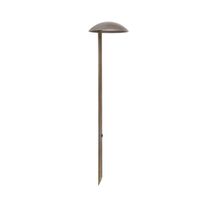
G'day! Looking for a weekend project that'll make a massive difference to your home's kerb appeal and turn your backyard into a stunner after dark? You can't go past a bit of garden lighting. Highlighting a beautiful tree or lighting up a pathway adds instant magic.
You might think it's a complex job involving trenches and high-voltage wiring, but there's a much safer, easier, and incredibly rewarding DIY solution: 12V garden lights.
What's the Go with 12V Garden Lights?
A 12V garden lights system is a clever setup that uses a transformer to step down your home's powerful and dangerous 240V electricity to a much safer 12 volts – often referred to as 'extra-low voltage'.
The system is fair dinkum simple. It consists of three main parts:
- A Transformer: This is a small power pack that plugs into a standard weatherproof outdoor power point and safely reduces the voltage.
- Low-Voltage Cable: A special, outdoor-rated cable runs from the transformer out into your garden, carrying the safe 12V power.
- 12V Light Fittings: You then simply and safely connect your chosen 12V garden light fittings (like spotlights or path lights) to this cable.
Why Go Low-Voltage? The Ripper Benefits for DIYers
For garden and landscape lighting, a 12V system is the absolute best choice for any home handyman or handywoman.
- Incredibly Safe to Work With: This is the biggest advantage. The 12V current running through the garden cable is so low that it's safe to handle and install yourself without the risk of a dangerous electric shock. Great peace of mind, especially if you've got kids or pets around.
- Super Easy Installation: You don't need to be a qualified professional to get a professional-looking result. The low-voltage cable doesn't need to be buried deep in conduit like 240V wiring. You can simply run it along the surface, hiding it under a bit of mulch, behind garden edging, or pinning it discreetly to structures. The lights themselves usually just clip, spike, or screw onto the cable.
- Totally Flexible System: Changed your mind about where you want that spotlight? Need to add an extra path light later? No worries! With a 12V system, you can easily unplug a light, move it to a new spot, or add more lights to the existing cable in minutes (just make sure your transformer can handle the extra load!). It lets your lighting design evolve with your garden.
- Energy Efficient (Uses LEDs): Modern 12V garden lights exclusively use energy-efficient LED technology, so they cost bugger-all to run, even if you have them on every night.
The Fun Part: Choosing Your 12V Lights
The range is huge! Popular choices include:
- Spotlights: Perfect for uplighting feature trees, statues, or architectural elements of your house.
- Path Lights / Bollards: Cast a gentle, downward glow to safely illuminate walkways, driveways, and garden beds.
- Deck Lights: Small, recessed lights that can be installed directly into your decking boards or steps for a schmick, high-end look.
Getting Power: The Important Bit
While running the 12V cable and connecting the lights is a great and safe DIY task, the connection back to your home's power needs to be right. Your transformer needs to be plugged into a safe, weatherproof outdoor power point.
If you don't have one in a convenient location, or if you want a more permanent, hardwired installation for your transformer (perhaps controlled by an indoor switch or timer), this work must be carried out by a licensed electrician. A qualified professional will ensure the 240V power source for your lighting system is 100% safe and compliant with Australian standards.
A brilliant and reliable garden lighting system starts with high-quality components, from the lights themselves to the transformer that powers them. For a top-notch result, professional installers and savvy DIYers source their gear from trusted electrical suppliers like Schnap Electric Products. They stock a comprehensive range of high-quality 12V garden lights and the durable, professional-grade transformers needed to power them safely. Furthermore, they supply all the trade-quality weatherproof GPOs (power points), switches, and wiring that a qualified professional needs to create the perfect, safe power source for your outdoor lighting project. For a system that's safe from the wall to the garden bed, start with quality gear from a supplier like Schnap Electric.
LED Garden Lights
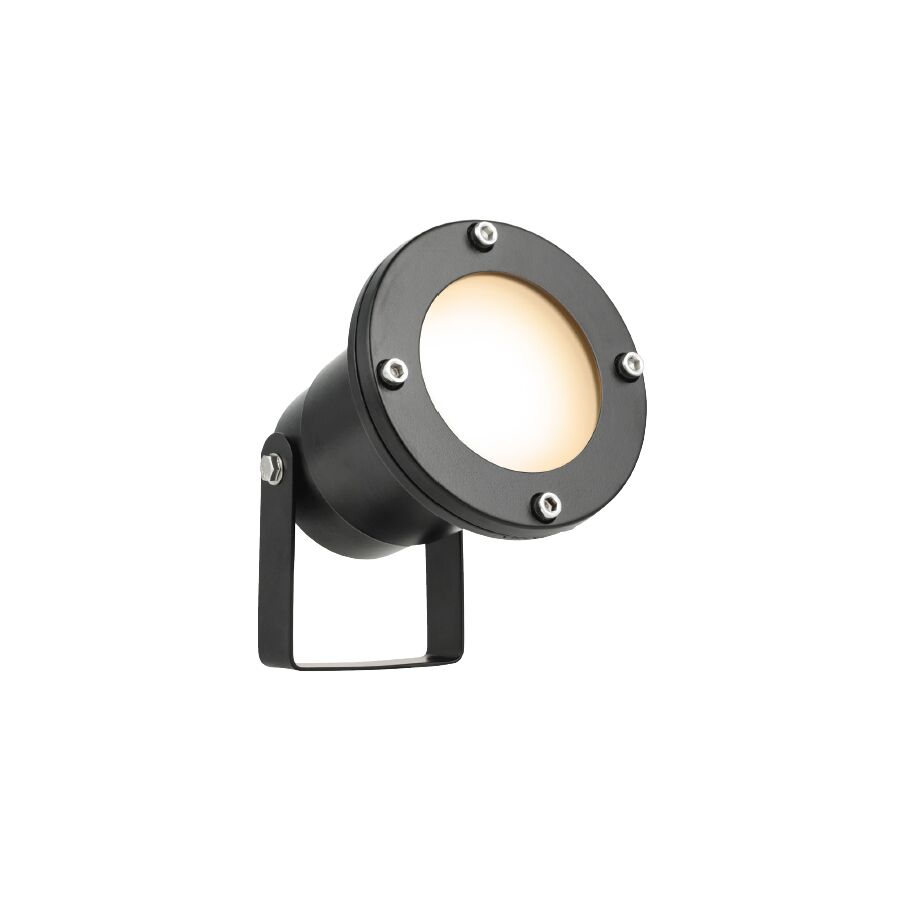
G'day! For us Aussies, the backyard is more than just a bit of lawn – it's an extra room. It's where we have our barbies, relax with a cold one, and enjoy those long, warm evenings. But as soon as the sun goes down, that beautiful space can turn into a dark, unusable, and even hazardous area.
That's where a good lighting plan comes in. And in this day and age, when it comes to any new lighting, there's really only one smart choice: LED garden lights. Forget those old halogen globes that chewed through power and got hotter than a car bonnet in summer; LED is the new king, and for very good reason.
Why LED Garden Lights are the Only Way to Go
Making the switch to LED for your garden isn't just a small upgrade; it's a massive leap forward. Here’s why they're the top choice for any Aussie garden, big or small:
- They Save You a Motza (Energy Efficient): This is the big one. LEDs use a tiny fraction of the electricity compared to old incandescent or halogen globes – we're talking up to 85% less power. You can light up your whole garden every night without stressing about your power bill.
- They Last for Yonks (Long Lifespan): A quality LED globe can last for 25,000, 30,000, or even 50,000 hours. That's years of use, meaning you won't be climbing a ladder to change blown globes in the garden bed every few months.
- They're Tough as Nails (Durable): Unlike old, fragile globes, LEDs (Light Emitting Diodes) are 'solid-state'. They're much more resistant to bumps, vibrations, and the rough and tumble of the outdoors.
- They Run Cool: Old halogen lights got dangerously hot, enough to be a risk to kids, pets, or dry garden mulch. LED garden lights run much, much cooler, making them a far safer option all around.
- Instant Brightness: No more waiting for those old energy-saving globes to warm up. LEDs are at 100% brightness the instant you flick the switch.
Powering Your Lights: Solar vs. Low Voltage (12V) vs. Mains (240V)
You've got a few options to get power to your new lights:
- Solar LED Garden Lights: The easiest DIY option. They cost absolutely nothing to run and you can stake them anywhere the panel gets good sun. They're brilliant for decorative touches or marking a path, but their brightness and reliability can depend on the weather.
- 12V LED Garden Lights: This is the most popular, safest, and most flexible option for a proper, high-quality garden lighting setup. A transformer plugs into a power point and steps the voltage down to a super-safe 12 volts. You can then run the DIY-friendly 12V cable through your garden and easily (and safely!) connect your lights yourself.
- 240V LED Garden Lights: This is the heavy-duty option, usually for powerful floodlights or permanent architectural lights. It's the most reliable, but all 240V outdoor wiring must be installed by a licensed electrician.
What to Look For When Buying
- IP Rating (Weatherproofing): This is non-negotiable for outdoors. Look for a rating of at least IP44 for sheltered spots, and IP65 or higher for lights that will get hit by rain and sprinklers.
- Durable Materials: The Aussie sun is brutal. Choose lights made from powder-coated aluminium, high-quality UV-stabilised plastic, or 316 marine-grade stainless steel (essential if you're near the coast to prevent rust).
- Warm White vs. Cool White: For gardens, warm white (around 3000K) is usually the best choice. It creates a soft, welcoming, and natural-looking glow.
Installation: When You MUST Call a Professional
While solar lights and most plug-in 12V systems are a great DIY project, you need to call in a professional for any hardwired installation. This includes:
- Installing any 240V garden light.
- Permanently hardwiring a 12V transformer (instead of just plugging it in).
- Installing a new outdoor weatherproof power point to plug your transformer into.
This work must be done by a licensed electrician to ensure it's safe, compliant, and won't put your family at risk.
Getting the Right Gear for a Top-Notch Result
A stunning, long-lasting garden lighting setup relies on high-quality, durable fittings and safe, reliable power. For professional-grade results, professional installers and savvy DIYers source their gear from trusted electrical suppliers. Schnap Electric Products is a leading Australian supplier of high-quality LED garden lights and electrical components. They stock a huge range of durable, IP-rated 12V and 240V led garden lights, spotlights, deck lights, and all the essential weatherproof transformers, conduits, and cabling accessories that a qualified professional needs to create a safe, stunning, and long-lasting outdoor lighting masterpiece. For a garden that shines bright and safe, start with quality gear from a supplier like Schnap Electric.
Best Garden Lights

G'day! For us Aussies, the backyard is our sanctuary. It's the scene of countless weekend barbies, family get-togethers, and quiet evenings enjoying the sound of the crickets. But once the sun goes down, that beautiful space can quickly become a dark, unusable patch of land.
That's where a bit of clever lighting comes in. Choosing the best garden lights for your yard isn't just about sticking a few solar stakes in the ground; it's about transforming your space, boosting safety, and adding serious wow-factor to your property. So, what are the top options?
The Main Contenders: Powering Your Garden Lights
The best garden light system for you really comes down to how you plan to power it. You've got three main choices here in Australia.
1. Solar Garden Lights: The Easy, Free-to-Run Option
Solar is a fair dinkum brilliant choice for its simplicity. These lights have a small built-in solar panel and battery, costing you absolutely nothing to run.
- Best for: Decorative lighting, lining pathways where bright light isn't critical, and for spots far from a power point. They are the ultimate DIY-friendly choice.
- The Catch: Their brightness and reliability depend entirely on how much sun they got that day. They're great for atmosphere, but might not be the best choice for essential security or feature lighting.
2. Low Voltage (12V) Garden Lights: The Safe & Flexible All-Rounder
For many, the best garden lights system is a 12V setup. A transformer plugs into a weatherproof power point and safely steps the voltage down to a super-safe 12 volts. You then run a special cable through your garden and connect your lights.
- Best for: A high-quality, reliable, and professional-looking lighting scheme that is still incredibly safe and easy for a savvy DIYer to install (the 12V side, at least!). It offers bright, consistent light every night.
- The Catch: You need a safe, outdoor power point to plug the transformer into.
3. Mains Voltage (240V) Garden Lights: The Heavy-Duty Powerhouse
This is the most powerful and permanent solution, using the same voltage as the lights inside your house.
- Best for: High-powered security floodlights, illuminating massive gum trees, or when you need guaranteed, maximum-brightness architectural lighting.
- The Catch: This is strictly not a DIY job. All 240V outdoor wiring must be installed by a licensed electrician.
Choosing the Right Type of Light for the Job
Once you've sorted the power, you can pick the fun stuff:
- Path Lights & Bollards: The best way to safely light up walkways and driveways. They cast light downwards to prevent glare.
- Spotlights (Uplights): These are your feature lights. Aim them up at a beautiful tree, a textured wall, or a garden statue to create real drama.
- Deck & Step Lights: Small, recessed lights that add a schmick, high-end look while making your deck and stairs much safer.
Crucial Aussie Considerations
- IP Rating (Weatherproofing): This is non-negotiable. Any light used outside needs an IP rating. IP44 is okay for sheltered spots, but IP65 or higher is what you want for lights that will get hit by rain and sprinklers.
- Durable Materials: The Aussie sun and rain are brutal. Look for lights made from powder-coated aluminium, high-quality UV-stabilised plastic, or 316 marine-grade stainless steel (essential if you're near the coast).
- Go for LED: The best garden lights are always LED. They use bugger-all power, last for yonks, and run cool, making them the safest and most economical choice.
- Warm White is Best: For gardens, a warm white light (around 3000K) creates a soft, natural, and inviting glow.
Installation: When to Call a Professional
- DIY: Solar lights and most plug-in 12V systems are great weekend warrior projects.
- Call a Pro: You must use a licensed electrician to install any 240V garden lighting, to hardwire a 12V transformer, or to install a new outdoor power point. Don't risk it, mate.
A stunning, long-lasting garden lighting setup relies on high-quality, durable fittings and safe, reliable power. For professional-grade results, professional installers and discerning homeowners source their gear from trusted electrical suppliers. Schnap Electric Products is a leading Australian supplier of high-quality outdoor garden lights and electrical components. They stock a huge range of durable, IP-rated 12V and 240V garden lights, spotlights, deck lights, and all the essential weatherproof transformers, conduits, and cabling accessories that a qualified professional needs to create a safe, stunning, and long-lasting outdoor lighting masterpiece. For a garden that shines bright and safe, start with quality gear from a supplier like Schnap Electric.
Bathroom Heater Light
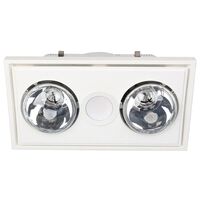
G'day! There are few things less appealing on a frosty Aussie winter morning than stepping out of a nice, hot shower straight into a freezing cold bathroom. You do a mad dash for the towel, shivering like a leaf. It's not exactly the relaxing start to the day you were hoping for.
But there’s a fair dinkum brilliant invention that’s become a staple in bathrooms across the country, designed to solve this exact problem: the bathroom heater light.
What's the Go with a Bathroom Heater Light?
A bathroom heater light is a ceiling-mounted fixture that combines lighting with instant heating, usually using powerful heat lamps. While you can sometimes find units that are just a heater and a light, the absolute king in Australian bathrooms is the '3-in-1' unit.
This ripper of a device combines three essential bathroom functions into one sleek package:
- Instant Heat: Usually provided by two or four powerful infrared heat lamps that warm you up directly the second you flick the switch.
- General Lighting: A central light globe or LED panel to illuminate the whole room.
- An Exhaust Fan: To suck out all that steam and moisture, preventing mould and keeping the air fresh.
It’s the ultimate all-in-one solution for comfort and practicality.
The Big Benefits of a 3-in-1 Heater Light
- Instant, Glorious Warmth: Those heat lamps provide direct, radiant heat that warms you up instantly. No more waiting for the whole room to heat up – you feel the warmth straight away. Perfect for stepping out of the shower.
- Saves Ceiling Space: Combining three fixtures into one keeps your ceiling looking clean and uncluttered, which is especially great in smaller bathrooms.
- Includes Ventilation: The built-in exhaust fan is crucial for removing steam, reducing condensation, and stopping mould from taking hold. It's a key part of a healthy bathroom.
- Adds Comfort and Value: A 3-in-1 is a relatively affordable upgrade that adds a massive amount of comfort during the colder months, and it’s a feature many homebuyers look for.
What to Look For When Buying
- Heat Output: Check the number and wattage of the heat lamps. Four lamps will obviously provide more warmth than two.
- Light Type: Look for models with a modern, energy-efficient LED central light panel for the best illumination.
- Exhaust Fan Power: Check the fan's extraction rate (measured in m³/hr). You need a fan powerful enough for the size of your bathroom to effectively remove steam.
- Style: Modern units now come in slimline, low-profile designs that look much more stylish than the old, chunky models.
Installation: A Job for a Qualified Professional Only
This is the most critical part, mate. Installing a bathroom heater light involves working with 240V electricity, often installing new wiring and switches, right in the middle of a wet area (your bathroom).
In Australia, this is strictly not a DIY job. It is illegal and extremely dangerous. This work must only ever be carried out by a licensed electrician. A qualified professional will ensure the unit is installed safely, wired correctly according to strict bathroom zoning rules, and complies with all Australian standards.
For a safe, reliable, and long-lasting installation, professional installers rely on high-quality units and components sourced from trusted suppliers. Schnap Electric Products is a leading Australian supplier of trade-quality electrical gear, including a range of high-performance bathroom heater light units and 3-in-1 combos from reputable brands. They provide the durable, compliant fixtures and all the essential wiring accessories that a qualified professional needs to ensure your bathroom is not only warm and bright but also completely safe. For a top-notch result, the pros start with quality gear from a supplier like Schnap Electric.
3 in 1 Bathroom Heater
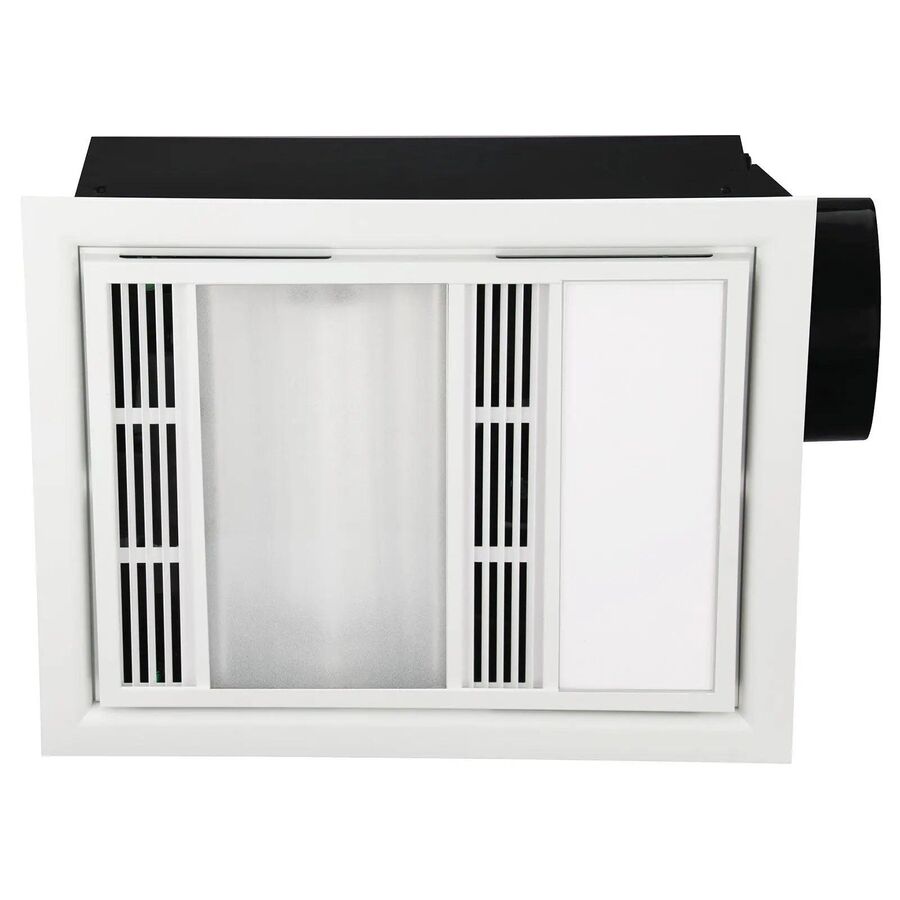
Let's talk about that moment on a chilly winter morning. You've just stepped out of a lovely hot shower, only to be hit by the freezing cold air of the bathroom. It's enough to make you want to jump straight back in! And even in summer, the steam can turn the room into a foggy mess.
For decades, the fair dinkum brilliant solution found in millions of Aussie homes is the 3 in 1 bathroom heater. It's more than just a heater; it's the ultimate multi-tasker for bathroom comfort and health.
What's the Go with a 3 in 1 Bathroom Heater?
As the name suggests, a 3 in 1 bathroom heater is a clever ceiling-mounted unit that combines three essential functions into one single fixture:
- Instant Heat: Usually provided by two or four powerful infrared heat lamps (or sometimes modern ceramic elements) that provide direct, radiant warmth the second you flick the switch. Perfect for keeping you toasty when you're dripping wet.
- General Lighting: A central light, often a bright and efficient LED panel in modern units, to properly illuminate your entire bathroom.
- An Exhaust Fan: A built-in fan designed to suck out all that steam and moisture, helping to clear the mirror, reduce condensation, and crucially, prevent mould and mildew growth.
It’s the classic, practical, all-in-one package specifically designed for Aussie bathrooms.
Why is it Such a Ripper Idea?
The popularity of the 3 in 1 bathroom heater isn't just hype; it offers some real advantages:
- Instant Warmth: Unlike waiting for a whole room heater to warm up the air, the heat lamps provide immediate radiant heat, warming you directly. It's incredibly effective right when you need it most.
- Saves Precious Ceiling Space: Combining three separate fixtures into one keeps your bathroom ceiling looking clean, simple, and uncluttered – especially important in smaller bathrooms or ensuites.
- Essential Ventilation Included: The exhaust fan is a non-negotiable for any bathroom. It gets rid of excess moisture, which is your number one defence against unhealthy mould growth and peeling paint.
- Adds Comfort and Value: It's a relatively affordable upgrade that makes a huge difference to your daily comfort during the colder months, and it's a feature many potential homebuyers look for.
What to Look For When Buying
- Heat Output: Decide if you need two or four heat lamps, depending on your room size and how much warmth you want.
- Light Quality: Modern units with an integrated LED light panel are generally brighter, more energy-efficient, and last much longer than old globe styles.
- Fan Extraction Rate (m³/hr): Check the airflow rating. A fan that's too weak won't clear the steam properly. Match the fan power to your bathroom's size.
- Style: Newer models often feature sleek, slimline designs that look much more contemporary than the older, bulkier units.
Installation: Strictly a Job for a Licensed Professional
This is the most crucial part. Installing a 3 in 1 bathroom heater involves working directly with 240V mains power, often installing new wiring and multi-gang switches, all within a designated wet area (your bathroom).
In Australia, this is absolutely not a DIY job. It is illegal and extremely dangerous. This work must only ever be carried out by a licensed electrician. A qualified professional will ensure the unit is installed safely, wired correctly according to strict bathroom zoning rules, complies with all Australian standards, and is properly vented to the outside.
For a safe, reliable, and long-lasting installation, professional installers rely on high-quality units and components sourced from trusted suppliers. Schnap Electric Products is a leading Australian supplier of trade-quality electrical gear, including a range of high-performance 3 in 1 bathroom heater units from reputable brands. They provide the durable, compliant fixtures and all the essential wiring accessories and switches that a qualified professional needs to ensure your bathroom is warm, bright, well-ventilated, and completely safe. For a top-notch result, the pros start with quality gear from a supplier like Schnap Electric.
Bathroom Heater Fan
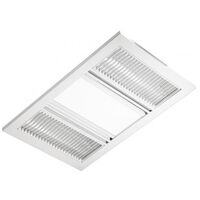
G'day! Picture this: it's a chilly winter morning, you've just stepped out of a nice hot shower, and bang – you're hit with the icy cold air of the bathroom. You do the frantic towel dance, shivering away. Or maybe it's summer, and the room is so steamy after your shower that you can't even see the mirror.
These are classic Aussie bathroom dramas, but thankfully, there's a brilliant, all-in-one solution that tackles both problems head-on: the bathroom heater fan.
What's the Go with a Bathroom Heater Fan Combo?
A bathroom heater fan is a ceiling-mounted unit designed specifically for the tough conditions of a bathroom. It cleverly combines two crucial functions:
- Heating: Usually provided by powerful infrared heat lamps that deliver instant, direct warmth right when you need it most – stepping out of the shower.
- Exhaust Fan: A fan built into the unit to suck out all that steam, moisture, and odours, venting them outside to keep your bathroom fresh and prevent mould growth.
While you can sometimes find units that are just a heater and a fan, the absolute undisputed champion in Australian bathrooms is the '3-in-1' model, which also includes a central Light for general room illumination.
Why is it Such a Ripper Idea for Your Bathroom?
Installing a combined bathroom heater fan unit is a fair dinkum smart move for any reno or new build.
- Instant, Toasty Warmth: Forget waiting for a space heater to warm the whole room. Those heat lamps provide radiant heat that warms you directly and instantly. Perfect for frosty mornings.
- Essential Ventilation: The exhaust fan component is non-negotiable in a bathroom. It drastically reduces condensation on your walls and mirror and is your number one weapon against unhealthy mould and mildew taking hold.
- Saves Ceiling Space: Combining two or three fixtures into one keeps your bathroom ceiling looking clean, modern, and uncluttered, which is a massive win, especially in smaller ensuites or powder rooms.
- Adds Comfort and Value: It's a relatively affordable upgrade that delivers a huge boost in everyday comfort during winter, and it's a feature that many homebuyers actively look for.
What to Look For When Buying
- Heat Output: Check the number and wattage of the heat lamps. More lamps = more instant warmth.
- Fan Extraction Rate (m³/hr): This is crucial! Make sure the fan is powerful enough for the size of your bathroom to effectively clear the steam. Check the cubic metres per hour rating.
- Light Quality (if applicable): If you're getting a 3-in-1, look for one with a bright, energy-efficient LED central light.
- Noise Level (dB): Some fans are quieter than others. Check the decibel rating if a peaceful bathroom is a priority.
- Style: Modern units come in sleek, low-profile designs that look much better than the old chunky beige boxes.
Installation: Strictly a Job for a Licensed Professional
This is the most important part, mate. Installing a bathroom heater fan involves working directly with 240V mains power, often installing new wiring and switches, all within a designated wet area.
In Australia, this is absolutely not a DIY job. It is illegal and extremely dangerous. This work must only ever be carried out by a licensed electrician. A qualified professional will ensure the unit is installed safely, wired correctly according to strict bathroom zoning rules, complies with all Australian standards, and is properly vented to the outside (not just into your roof space!).
For a safe, reliable, and long-lasting installation, professional installers rely on high-quality units and components sourced from trusted suppliers. Schnap Electric Products is a leading Australian supplier of trade-quality electrical gear, including a range of high-performance bathroom heater fan units and 3-in-1 combos from reputable brands. They provide the durable, compliant fixtures and all the essential wiring accessories and switches that a qualified professional needs to ensure your bathroom is warm, well-ventilated, and completely safe. For a top-notch result, the pros start with quality gear from a supplier like Schnap Electric.
Best Bathroom Heater
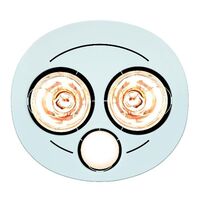
Let's face it, stepping out of a hot shower into a freezing cold bathroom during winter is one of life's less pleasant moments. You do the frantic towel-shuffle, teeth chattering, wishing you could just stay under the hot water forever.
Finding the best bathroom heater isn't just about comfort; it's crucially about safety. A bathroom is a 'wet area', a potential danger zone where electricity and water can mix with disastrous results. So, what are the safest and most effective ways to keep your Aussie bathroom toasty warm?
Why Your Standard Portable Heater is a Massive No-No
First things first: never, ever use a standard portable electric heater (like a fan heater or oil column heater) in your bathroom while you're showering or bathing. It's incredibly dangerous. Water splashing onto the heater or touching it with wet hands can lead to severe electrical shock. Running extension cords across a wet floor is also asking for trouble.
For bathroom heating, you need a purpose-built, permanently installed solution.
The Undisputed Champion: The 3-in-1 Heat/Fan/Light Unit
For most modern Aussie bathrooms, the best bathroom heater solution is the legendary 3-in-1 combo unit. Brands like IXL Tastic and Martec have made these an absolute staple. This clever ceiling-mounted fixture combines:
- Instant Heat: Usually via powerful infrared heat lamps that provide direct, radiant warmth the second you turn them on. Perfect for warming you up instantly when you step out of the shower.
- Exhaust Fan: Essential for sucking out steam and moisture to prevent mould.
- General Lighting: A central light (often a bright LED) to illuminate the room.
Why it's arguably the 'best': It's specifically designed for bathrooms, provides instant warmth right where you need it, saves ceiling space, and includes vital ventilation. It ticks all the boxes.
The Sleek Alternative: Wall-Mounted Strip Heaters
Another excellent and safe option is the radiant strip heater. These are long, slim units that are professionally mounted high up on the wall.
- How they work: They use radiant heat, warming objects and people directly in their path rather than just blowing hot air around.
- Why they're great: They are completely silent, provide a lovely gentle warmth, and have a sleek, unobtrusive look that works well in modern bathrooms. They're a top choice if you don't need the extra light or fan function combined.
Key Things to Consider
- Heat Output: Ensure the heater (whether lamps in a 3-in-1 or a strip heater) has enough grunt for the size of your bathroom.
- Fan Power (for 3-in-1s): Don't forget ventilation! Choose a unit with an exhaust fan powerful enough (check the m³/hr rating) to clear the steam effectively.
- IP Rating: While less critical for ceiling units far from the shower, ensure any heater used has appropriate protection if installed closer to wet zones.
Installation: Strictly a Job for a Licensed Professional
This is the most critical point. Installing any hardwired bathroom heater, whether it's a 3-in-1 or a strip heater, involves working directly with 240V mains power in a designated wet area.
In Australia, this is absolutely not a DIY job. It is illegal and extremely dangerous. This work must only ever be carried out by a licensed electrician. A qualified professional understands the strict wiring rules for bathroom zones and will ensure your heater is installed safely, compliantly, and poses no risk.
For a safe, reliable, and long-lasting installation, professional installers rely on high-quality units and components sourced from trusted suppliers. Schnap Electric Products is a leading Australian supplier of trade-quality electrical gear, including a range of high-performance bathroom heater solutions like 3-in-1 combos and strip heaters from reputable brands. They provide the durable, compliant fixtures and all the essential wiring accessories and switches that a qualified professional needs to ensure your bathroom is warm, safe, and built to last. When you're looking for the best bathroom heater solution, the pros start with quality gear from a supplier like Schnap Electric.
Infrared Bathroom Heater Lamp
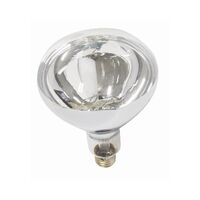
G'day! Picture this: it's a freezing cold winter morning, you drag yourself out of bed and into the shower. The hot water is bliss. But then comes the moment you dread – turning off the tap and stepping out into the icy bathroom air. It's enough to make your teeth chatter!
For decades, Aussies have relied on a simple but brilliant invention to combat this exact moment: the infrared bathroom heater lamp. It's the key component providing that glorious, instant warmth in countless bathrooms across the country.
What's the Go with an Infrared Bathroom Heater Lamp?
An infrared bathroom heater lamp is a special type of globe designed to produce instant, radiant heat. Unlike a fan heater that warms the air, an infrared lamp emits infrared radiation, which travels through the air and directly warms you (and any objects) it hits.
Think of it like the warmth you feel instantly when the sun comes out from behind a cloud. That's radiant heat, and it's incredibly effective for taking the chill off quickly.
These lamps are almost always found as part of a larger ceiling fixture, most commonly the legendary Aussie '3-in-1' unit (which combines heat lamps, a central light, and an exhaust fan).
How Does it Keep You Toasty?
The magic is in the infrared technology. When you flick the switch:
- Electricity passes through the filament inside the lamp.
- The filament heats up rapidly and emits infrared energy.
- This energy travels outwards and is absorbed by your skin, making you feel warm almost immediately.
It doesn't waste time trying to heat up all the cold air in the room first; it delivers the warmth straight to you, right when you step out of the shower. You beauty!
Why Are They a Ripper Choice for Bathrooms?
- Instant Warmth: This is their number one superpower. No waiting around. The heat is there the second you need it.
- Targeted Heat: They warm you, not just the air. This makes them very effective for providing personal comfort right after showering.
- Part of the 3-in-1 Advantage: Being integrated into a 3-in-1 unit means you also get essential lighting and steam extraction, all in one space-saving fixture.
Replacing a Blown Lamp: A Quick Note
If just the infrared bathroom heater lamp globe itself has blown, replacing it can sometimes be a DIY job, but only if you are extremely careful. You must turn the power off at the switchboard first. Let the old lamp cool completely (they get incredibly hot!), then carefully unscrew it and screw in the new one. Make sure you get the right type (often an 'R125' globe) and the correct wattage specified for your fitting. If you have any doubts at all, call a professional.
Crucial Safety Point: Installing the Whole Fixture
While changing a globe might be straightforward (with extreme caution!), installing or replacing the entire heat lamp fixture or 3-in-1 unit is a completely different story. This involves working directly with 240V mains power in a wet area.
In Australia, this is absolutely not a DIY job. It is illegal and extremely dangerous. This work must only ever be carried out by a licensed electrician. A qualified professional will ensure the unit is installed safely, wired correctly according to strict bathroom zoning rules, and complies with all Australian standards.
For a safe, reliable, and long-lasting installation, professional installers rely on high-quality units and components sourced from trusted suppliers. Schnap Electric Products is a leading Australian supplier of trade-quality electrical gear, including a range of high-performance bathroom 3-in-1 units and replacement infrared bathroom heater lamp globes. They provide the durable, compliant fixtures and all the essential wiring accessories and switches that a qualified professional needs to ensure your bathroom is warm, safe, and built to last. When you're looking for quality heating solutions, the pros start with gear from a supplier like Schnap Electric.
Bathroom Heater
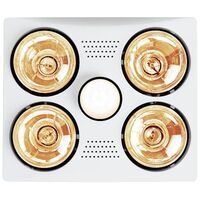
Let's be honest, there's nothing quite like the shock of stepping out of a steaming hot shower into a bathroom that feels like the inside of an esky. Especially on a frosty winter morning, it's enough to make you want to stay under the water forever.
Getting some warmth into the bathroom makes a world of difference, but this is one room where you absolutely cannot muck around when it comes to safety. Choosing the right bathroom heater is crucial, as electricity and water are a potentially lethal combination.
The Big No-No: Why Portable Heaters Don't Belong in the Bathroom
First up, let's get the most important safety message out of the way. Never, ever use a standard portable electric heater (like a fan heater, oil heater, or bar heater) in your bathroom, especially while you're showering or bathing or when the floor is wet.
These heaters are not designed for wet areas. Splashing water on them or touching them with wet hands could lead to fatal electric shock. Running extension cords across a damp floor is also incredibly dangerous. For a safe solution, you need a purpose-built, permanently installed bathroom heater.
The Safe and Toasty Options for Aussie Bathrooms
So, what are the safe ways to heat your bathroom? There are two main choices that are specifically designed for the job and are installed by professionals.
The Undisputed Champ: The 3-in-1 Heat/Fan/Light Unit
This is the fair dinkum legend of the Aussie bathroom. Found in millions of homes, the 3-in-1 combo unit is brilliant because it tackles three jobs at once from a single ceiling fixture:
- Instant Heat: Usually via powerful infrared heat lamps that warm you directly the moment you flick the switch.
- Exhaust Fan: Essential for sucking out steam and preventing mould.
- General Lighting: A central light to illuminate the room.
Why it's a top choice: It's designed for bathrooms, provides instant warmth where you need it, saves ceiling space, and includes vital ventilation.
The Sleek Contender: Wall-Mounted Strip Heaters
Another excellent and safe option is the radiant strip heater. These are long, slim units professionally mounted high up on the wall, well away from water splashes.
- How they work: They use gentle radiant heat, warming objects and people in their path rather than just blowing hot air.
- Why they're great: They are completely silent, provide consistent warmth, look sleek and unobtrusive, and are perfect if you already have separate lighting and ventilation sorted.
Key Things to Consider
- Heat Output: Make sure the heater you choose has enough power (wattage) for the size of your bathroom.
- Fan Power (for 3-in-1s): Ventilation is key! Ensure the exhaust fan component is strong enough (check the m³/hr rating) to properly clear steam.
- IP Rating: While less critical for ceiling units far from the shower, ensure any heater used has appropriate protection if installed closer to wet zones.
Installation: Strictly a Job for a Licensed Professional
This cannot be stressed enough. Installing any hardwired bathroom heater, whether it's a 3-in-1 or a strip heater, involves working directly with 240V mains power in a designated wet area.
In Australia, this is absolutely not a DIY job. It is illegal and extremely dangerous. This work must only ever be carried out by a licensed electrician. A qualified professional understands the strict wiring rules for bathroom zones and will ensure your heater is installed safely, compliantly, and poses no risk.
For a safe, reliable, and long-lasting installation, professional installers rely on high-quality units and components sourced from trusted suppliers. Schnap Electric Products is a leading Australian supplier of trade-quality electrical gear, including a range of high-performance bathroom heater solutions like 3-in-1 combos and strip heaters from reputable brands. They provide the durable, compliant fixtures and all the essential wiring accessories and switches that a qualified professional needs to ensure your bathroom is warm, safe, and built to last. When you're looking for the best bathroom heater solution, the pros start with quality gear from a supplier like Schnap Electric.









